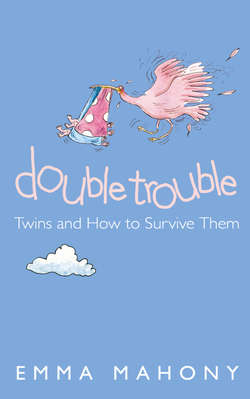Читать книгу Double Trouble: Twins and How to Survive Them - Emma Mahony - Страница 21
TWIN PREGNANCY VITAL STATISTICS3
ОглавлениеNatural conception:
The chance of having twins rises steadily as the mother gets older.
The peak age is 35 to 39 for European women.
Women are more likely to have twins the more children they have, independent of their age.
Fraternal or non-identical twins are more common if there is a presence of twins on the mother’s side of the family (contrary to popular opinion, the father’s side makes no difference).
Identical twins are random and occur in one in three of all twin births (although scientists are still trying to explain why they occur more in some families).
You can insure against the extra cost of having twins before your 14th week of pregnancy, providing you are not having IVF treatment and have yet to be scanned by your doctor. At the time of going to print, insurance company Marcus Hearn (0207 739 3444) will pay out £1,000 for a minimum premium of £42.
Assisted conception:
Since the very first test-tube baby Louise Brown was born in Britain in 1978, in vitro fertilization now accounts for around 8,000 babies born every year in Britain.
One in four IVF pregnancies results in twins.
The number of triplet births has risen from 91 in 1980 to 262 in 2002.
The number of twin births has grown from 6,400 in 1980 to 8,500 in 2002.
In Britain alone, the number of cycles of treatment has risen from 28,000 in 1991 to 44,000 in 2002.
A quarter of infertile couples succeed with IVF.
